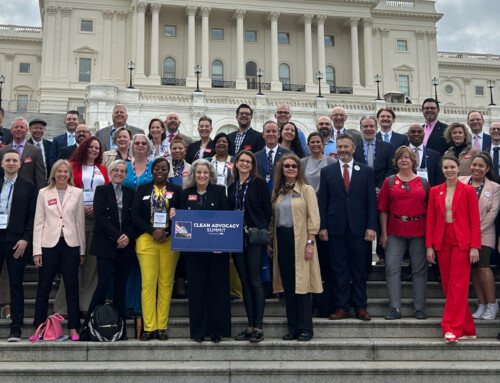Government Support for the Cleaning Industry
Since 2020, the United States federal government has appropriated more than US$4.5 trillion in COVID-19-related spending. The first round of spending included support for health care-related expenses like testing and vaccines, while other moneys were appropriated to help individuals in the form of enhanced unemployment, stimulus checks, and housing assistance.
Other aid was targeted towards supporting struggling and shuttered businesses, with such plans as the popular Paycheck Protection Program (PPP), Economic Injury Disaster Loans (EIDL), and Employee Retention Tax Credit (ERTC). Many ISSA members were able to take advantage of these programs directly. Others who were not eligible, likely benefited because ISSA successfully lobbied to ensure cleaning-related expenses were included as qualified expenses for the PPP program. Additional programs like the Shuttered Venue Operators Grant and Restaurant Revitalization Fund may have also had some positive impact on sales for some cleaning industry companies.
While Congress is unlikely to pass another large round of COVID-19-related relief, there are billions of dollars appropriated to state and local governments, school districts, airports, and other entities that have gone unspent. Additionally, ISSA’s government affairs team continues to lobby Congress to reinstate the prematurely canceled ERTC as well as for incentives to help businesses invest in the transition to a new normal when it comes to healthy and safe workplaces.
Unspent COVID-19 relief
To date, hundreds of billions of dollars have been dispersed through the Coronavirus Aid, Relief, and Economic Security Act (CARES Act), as well as the American Rescue Plan. The funding is available for airports, K-12 education, higher education, state and local governments, etc.
Much of it has gone unspent. For example, more than $200 billion in the Elementary and Secondary School Emergency Relief Fund (ESSER) remains unspent, and schools have until 2025 to spend it. Each school district must complete the Safe Return to ln-Person instruction and Continuity of Services Plan Checklist to receive funding (hand-washing, cleaning, and air-filtration included).
ISSA was able to ensure that the use of these funds “include loans, grants, or in-kind assistance to small businesses, nonprofits, or other entities to implement COVID-19 prevention or mitigation tactics, such as…ventilation improvements; enhanced cleaning efforts; and barriers or partitions.”
Additionally, state and local governments have been given an enormous amount of latitude to spend their federal dollars.
Since each of these entities have different uses, requirements, and regulations, we encourage member companies to ask questions of their state and local officials about the use of these dollars for cleaning-related expenses.
In January 2022, the U.S. Treasury ultimately issued the final rule for how state and local governments can use the $350 billion in Coronavirus State and Local Fiscal Recovery Funds (SLFRF).
If you sell product or services to government entities, you should be asking them if they have tapped into these funds already. Ask questions like: Have you used all your COVID-19 rescue/relief funds? If not, did you know you can use those funds to maintain and improve healthy and safe environments?
ERTC reinstatement?
On February 10, 2022, ISSA joined a coalition of over 70 organizations representing a variety of trade associations and charitable nonprofits to commend U.S. Senators Maggie Hassan (D-NH), Tim Scott (R-SC), Mark Warner (D-VA), Shelly Moore Capito (R-WV), and Ben Cardin (D-MD) for introducing the bipartisan Employee Retention Tax Credit Reinstatement Act and urge swift passage of the legislation to restore 2021 fourth-quarter access to the credit.
The ERTC was designed to promote small businesses rehiring employees that businesses may have had to let go at the start of the pandemic or ensure that employees were retained while their companies recovered. While less well known than the PPP, the ERTC was one of the only remaining tools for businesses that continued to be impacted by the pandemic.
The ERTC was originally scheduled to expire at the end of 2021, but the Infrastructure Investment and Jobs Act (IIJA) enacted in November 2021, disallowed this credit for the fourth quarter of 2021. Many small businesses continued to take the tax credit into the fourth quarter, and now face a retroactive tax increase and a complex, frustrating process in reconciling the credit that they will now have to forfeit.
Healthy Workplaces Coalition
In 2020, an informal group of more than 50 trade associations and nonprofit organizations formed by ISSA came together to champion the policy of the bipartisan Healthy & Safe Workplace Tax Credit, sponsored by Senators Rob Portman (R-OH) and Kyrsten Sinema (D-AZ), that would have provided critical federal support to help businesses implement workplace improvements and strategies to advance the health and safety of employees and all others inside these facilities.
In the past two years, businesses around the country have been struggling to meet these new and evolving expectations for returning safely to our buildings. More than ever, businesses need help as they face the unexpected costs to deploy proven workplace solutions and strategies to address a post-COVID-19 environment.
While several policy proposals have emerged to address this challenge, Congress has yet to take action to help incentivize healthy workplace improvements. As market demand increases for businesses to invest in healthier workplaces, the need for federal action to support these businesses also increases.
As a result, we have helped to create a formal Healthy Workplaces Coalition. This non-partisan coalition of leading nonprofits, trade associations, companies and other entities will be committed to promoting and advocating for safer and healthier workplaces, as well as associated federal policies that will help businesses toward this goal. The coalition’s goal will be centered around raising awareness, ensuring the public, policymakers, and businesses understand that workplace health and safety is critical to doing business now and beyond the COVID-19 pandemic.
The main objective will be to support and advance federal policy aimed at helping businesses and nonprofits better afford and implement health and safety improvements in workplaces and across the built environment.
















